
Scriptly Helps Pharmacies Identify Trends in Real Time with Reveal
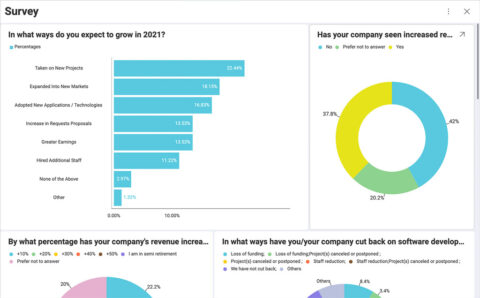
2020 was a difficult year for many businesses for numerous reasons, including the transition to remote work, lockdowns and budget freezes. Reveal surveyed software developers and IT leaders to understand how they were impacted by COVID-19 in 2020, their projections for 2021 and their plans for technologies and products moving forward.
We discovered three major themes:
Fill out the form to continue reading.
The survey found that, in terms of revenue in 2020, 38% of respondents saw increased revenues and of those, more than a third saw an increase of 30% or more.
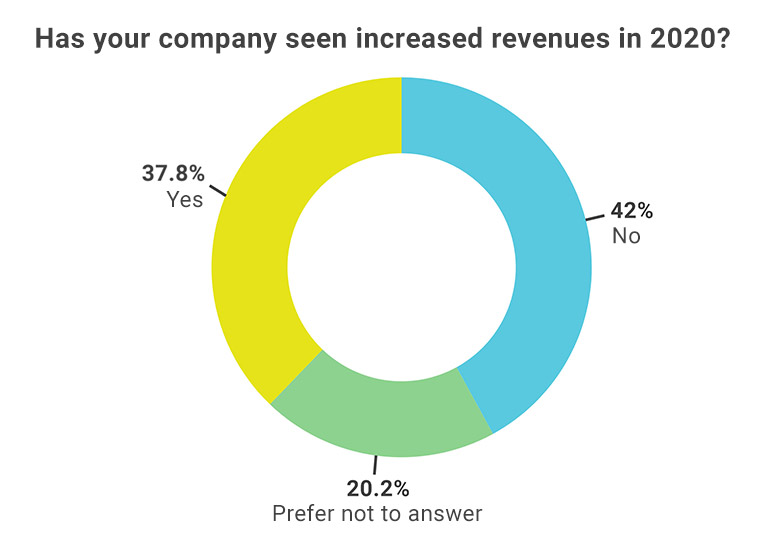
For those who saw revenue increases in 2020, the largest segment (42% of respondents) reported gains of up to 20%. However, some saw gains as high as 40% (7% of respondents) and 50% (13% of respondents), reflecting tech’s overall strength during COVID-19.
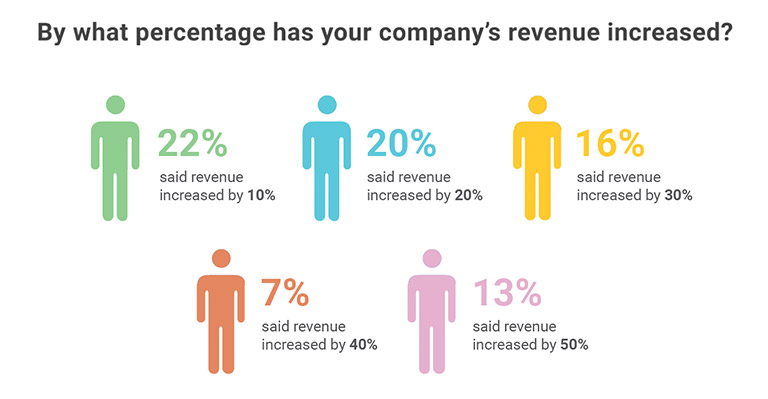
But while many saw opportunities and strong results in 2020, the full picture was decidedly mixed. Some companies saw revenues drop and projects delayed or canceled, yet almost half of respondents did not face cutbacks.
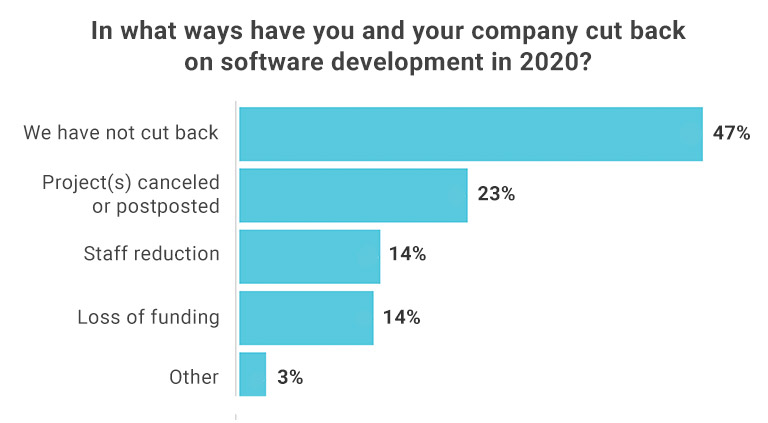
With 2020 in the rearview mirror, many were bullish on 2021. Nearly a quarter plan to take on new projects, along with other expansions and new technology adoptions. COVID-19 has caused a massive acceleration in digital technologies —Zoom, WFH, virtual learning, instacart, streaming, telehealth —and many of these will continue to be used post-pandemic. Pre-COVID-19, total annual revenues of US telehealth providers was estimated at $3 billion; post pandemic, Medicare projects up to $250 billion of current US healthcare spend could potentially be virtualized.
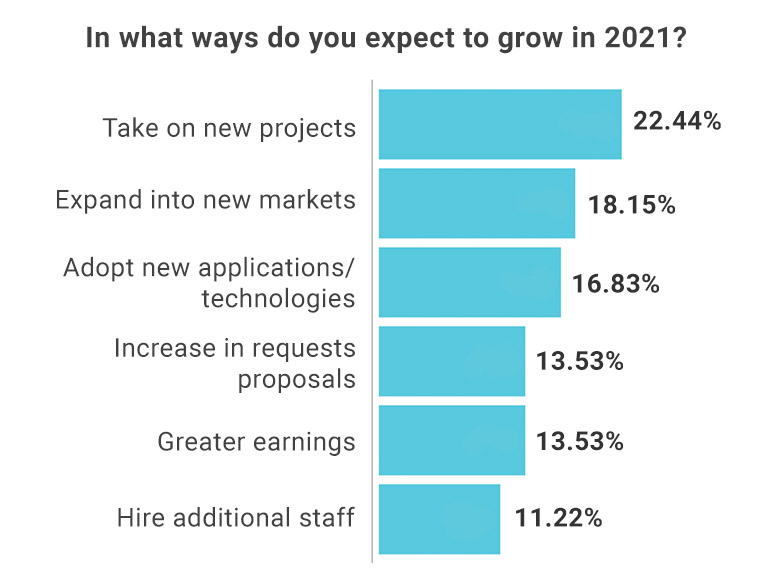
The pandemic caused a rise in digital transformation within enterprises and almost half of respondents reported an increase in their use of data and analytics, affirming the continued movement of modern data and analytics offerings from an early market into the mainstream.
While the increase in the use of data and analytics may be a natural progression, it’s likely that the pandemic had a hand in this rapid adoption. Almost half of respondents said that they were seeing increased requests from their customers for access to data and analytics, while only 15% indicated a decreased interest from customers.
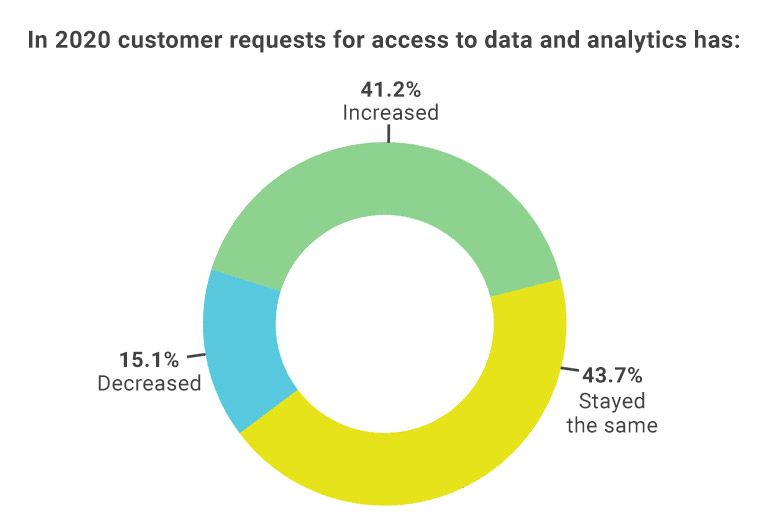
The survey also revealed a growing adoption of white-label embedded analytics, which allows developers to deliver real-time reporting, interactive data visualization and/or advanced analytics directly into enterprise business applications. This is different from standard BI tools, which require users to leave their workflow applications to look at data insights in a separate application.
Of those respondents who have adopted embedded analytics, almost half have been using them more than five years, while 28% have been embedding for two to four years.
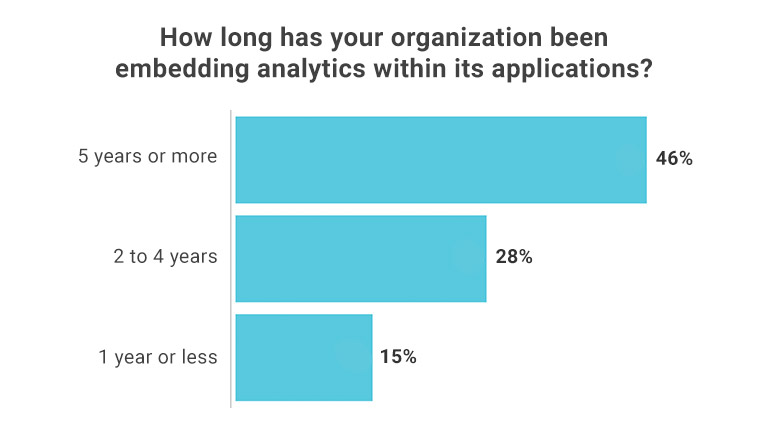
One of the most powerful features of embedded analytics, robust visualizations and analytical functions, was selected by a quarter of respondents as their main use case. But the survey also showed that respondents were very outcomes focused: the largest percentage, 33%, were embedding analytics to achieve a competitive advantage. And just under a quarter were motivated by “data-driven decision making,” validating a growing trend known as data storytelling — using data to gain insights and present more compelling messages to executives, customers, or partners.
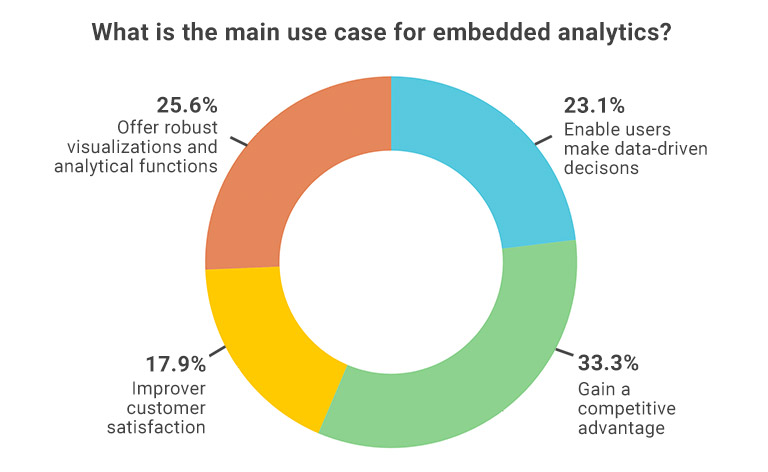
Machine learning is a subset of artificial intelligence that enables systems to learn and predict outcomes without explicit programming. Because it is adept at prediction, such as calculating the likelihood of events or forecasting outcomes, machine learning is a perfect match for analytics.
While machine learning has been bubbling under the surface for many years, plans for it surged in 2020 in relation to embedded analytics. Sixteen percent of respondents indicated plans to implement machine learning in the near future, a strong increase over the 6% of respondents who are currently embedding it. The survey also indicated a growing interest in edge analytics, natural learning, and predictive analytics, while plans for reporting and data analytics slowed — an indication that many respondents have already done this.
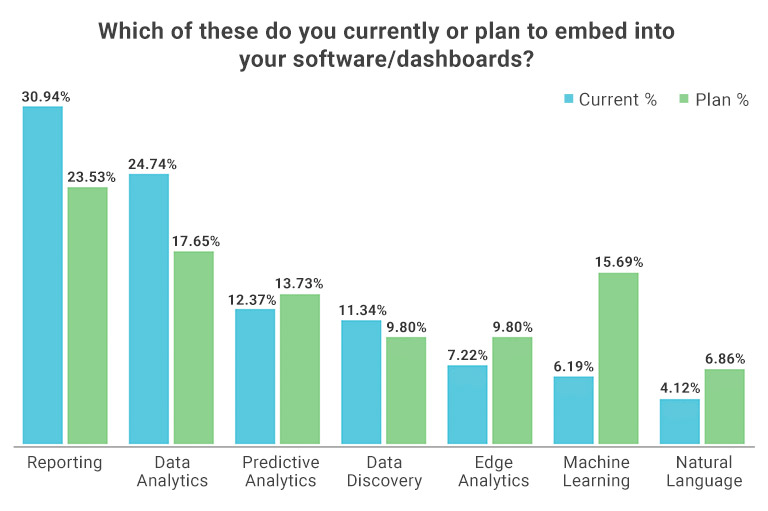
Software developers and IT leaders have proven their resilience during the trying times of 2020. Faced with budget freezes and delays in the development cycle, they were able to take advantage of market opportunities, bringing on new projects and adopting new applications and technology.
The mass disruptions of 2020 have proven that data and analytics are indispensable for everything from business productivity and solving problems to the insights of daily life. The opportunity for growth in 2021 is positive. In the coming year, business intelligence and analytics will continue to make an impact, allowing enterprises to gain data insights that inform and guide — through visualizations that not only tell a story but offer actionable insights.
In this world of ambiguity — characterized by uncertainty, risk, doubt and fake news — now is the time to lead with purpose and bring clarity through data and analytics you can rely on and, most importantly, trust. Data and analytics is increasingly being put into the heart, the center, of every organization’s digital business strategy.
Andrew White, Distinguished VP Analyst, Gartner
The Future of Data and Analytics is Now
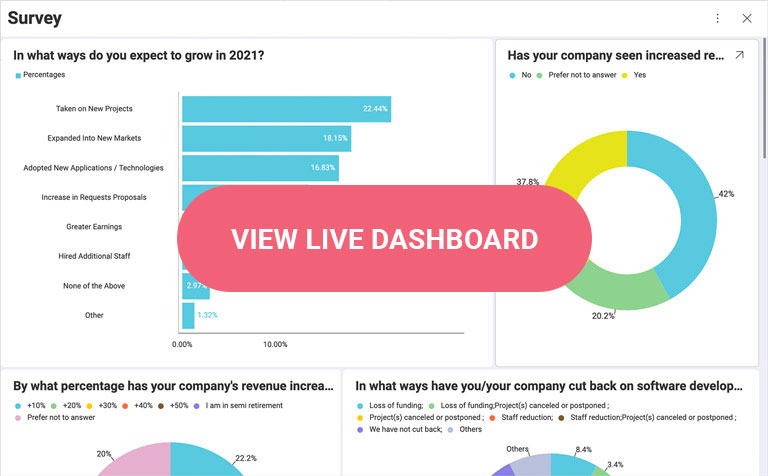
About the Survey
The survey results are based on responses from 124 software developers and IT leaders who participated in the Infragistics Trends in Software Development and Analytics survey, conducted in November 2020.
Back to Top